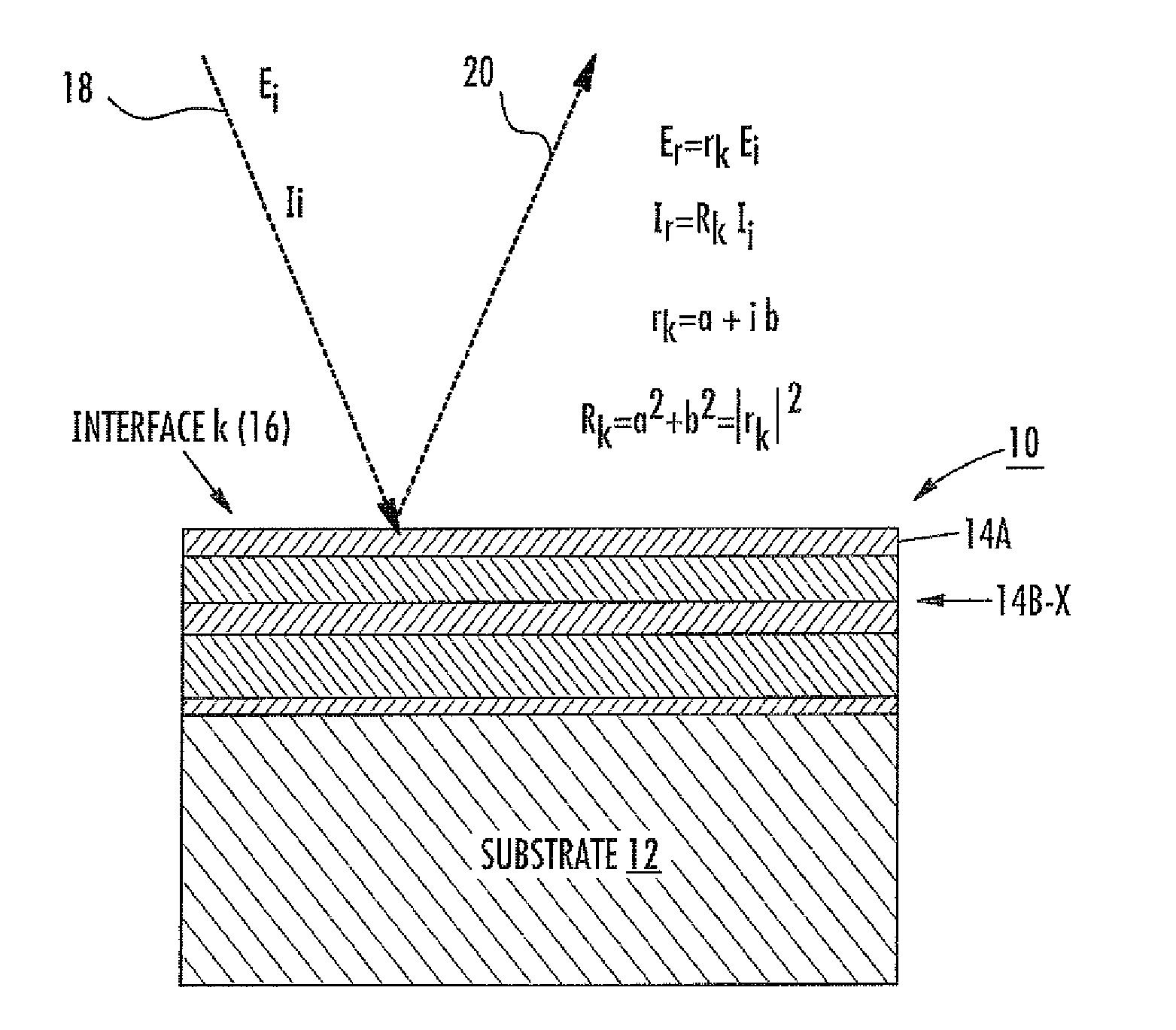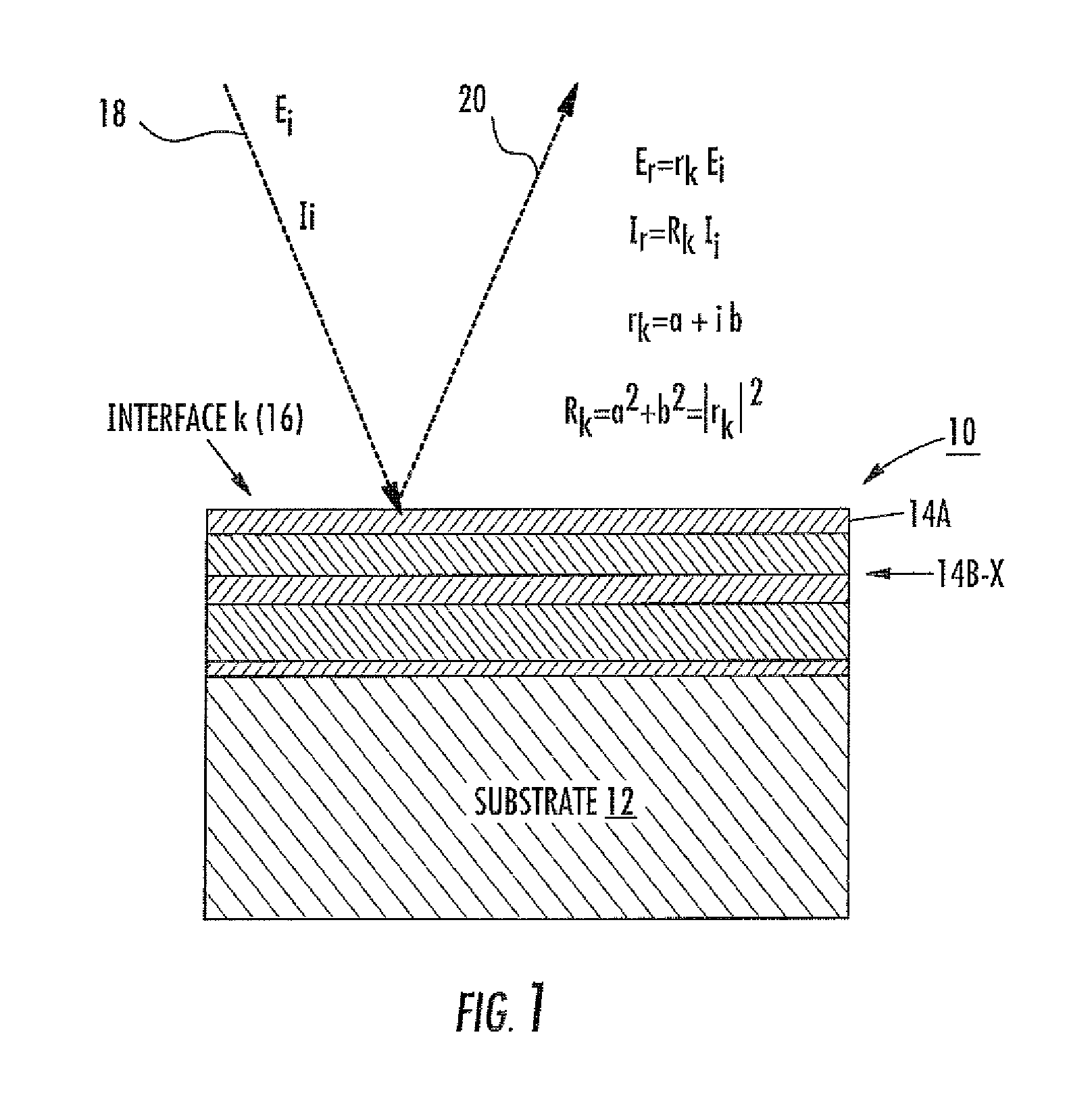Thin Film Interference Filter and Bootstrap Method for Interference Filter Thin Film Deposition Process Control
a thin film deposition process and interference filter technology, applied in the field of complex interference filters, can solve the problems of large amount of optical dielectric, e.g., greater than ten microns, and high manufacturing tolerances and costs of bulk optical dielectrics, and achieve unpredictable, irregular, irregular, or otherwise undesirable passbands
- Summary
- Abstract
- Description
- Claims
- Application Information
AI Technical Summary
Benefits of technology
Problems solved by technology
Method used
Image
Examples
Embodiment Construction
[0042]Detailed reference will now be made to the drawings in which examples embodying the present invention are shown. Repeat use of reference characters in the drawings and detailed description is intended to represent like or analogous features or elements of the present invention.
[0043]The drawings and detailed description provide a full and detailed written description of the invention and the manner and process of making and using it, so as to enable one skilled in the pertinent art to make and use it. The drawings and detailed description also provide the best mode of carrying out the invention. However, the examples set forth herein are provided by way of explanation of the invention and are not meant as limitations of the invention. The present invention thus includes modifications and variations of the following examples as come within the scope of the appended claims and their equivalents.
[0044]Turning now to the figures, FIG. 1 shows a thin film interference filter 10, wh...
PUM
 Login to View More
Login to View More Abstract
Description
Claims
Application Information
 Login to View More
Login to View More - R&D
- Intellectual Property
- Life Sciences
- Materials
- Tech Scout
- Unparalleled Data Quality
- Higher Quality Content
- 60% Fewer Hallucinations
Browse by: Latest US Patents, China's latest patents, Technical Efficacy Thesaurus, Application Domain, Technology Topic, Popular Technical Reports.
© 2025 PatSnap. All rights reserved.Legal|Privacy policy|Modern Slavery Act Transparency Statement|Sitemap|About US| Contact US: help@patsnap.com



